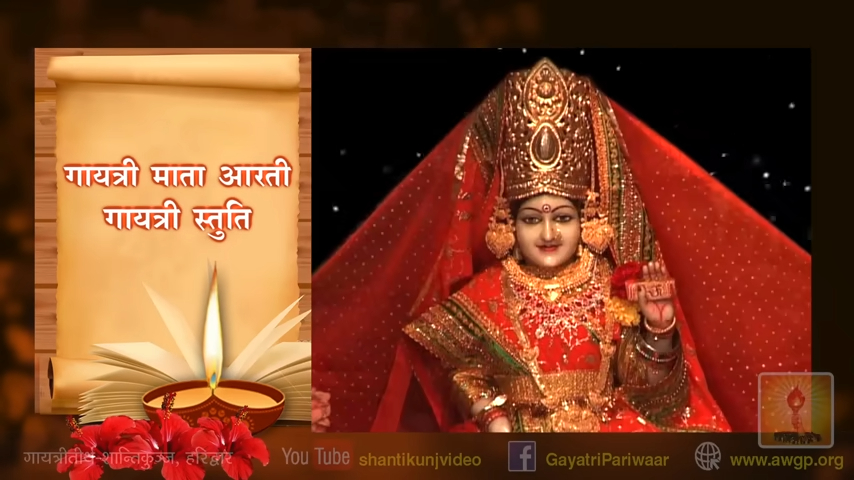
On the 5th day of Navratri, devotees worship Maa Skandamata, the fifth form of Goddess Durga, who is revered as the mother of Lord Kartikeya (Skanda). The name “Skandamata” means the mother of Skanda, reflecting her nurturing and protective aspects.
5th day of Navratri: Significance of Maa Skandamata
Maa Skandamata is often depicted sitting on a lotus flower, holding baby Skanda (Lord Kartikeya) in her lap, while she has four arms. Two of her arms hold lotus flowers, one arm holds her son, and with the fourth arm, she blesses her devotees. The lotus, often referred to as the “Padmasana,” symbolizes wisdom and detachment, representing purity in a world of chaos.
Maa Skandamata is believed to bless her devotees with wisdom, prosperity, and salvation. Her worship is said to elevate the spiritual consciousness of her followers, removing obstacles in life and guiding them toward success and peace. She represents the divine energy that nurtures and protects the devotees from harm and bestows upon them the strength to overcome the challenges of life.
One of the significant attributes of Skandamata is that she helps awaken a devotee’s intellectual and creative powers. Those who are involved in the field of knowledge, wisdom, or the arts can greatly benefit from her blessings. Devotees believe that by worshipping Maa Skandamata, they receive her divine grace not only as a mother but also as a guiding force.
The Color of the Navratri Fifth Day: Yellow
Each day of Navratri is associated with a specific color, and for the fifth day, the color yellow holds special significance. Yellow symbolizes joy, brightness, and wisdom. Wearing yellow during the fifth day of Navratri invokes the divine energy of Maa Skandamata and creates a positive and vibrant atmosphere.
The color yellow is also associated with learning and enlightenment, making it an apt representation of Skandamata, who bestows wisdom upon her devotees. Devotees are encouraged to wear yellow attire on this day, and temples are often adorned with yellow flowers as a mark of respect for the goddess.
Puja Vidhi (Rituals) for Maa Skandamata
Performing the right puja rituals is an essential part of honoring Maa Skandamata on the fifth day of Navratri. The puja begins early in the morning with the purification of the body and mind through meditation, followed by the preparation of the sacred altar.
Here is a step-by-step guide to the rituals for worshipping Maa Skandamata:
- Purification and Setup:
- Start by taking a bath and wearing clean, yellow-colored clothes.
- Prepare the altar with a picture or idol of Maa Skandamata.
- Place yellow flowers, sandalwood, kumkum, and incense sticks in front of the goddess.
- Invocation of the Goddess:
- Chant the mantra of Maa Skandamata to invoke her divine presence. A common mantra for the fifth day of Navratri is:”ॐ देवी स्कन्दमातायै नमः”
“Om Devi Skandamatayai Namah.” - Light a ghee lamp (diya) and offer your prayers to the goddess with deep devotion.
- Chant the mantra of Maa Skandamata to invoke her divine presence. A common mantra for the fifth day of Navratri is:”ॐ देवी स्कन्दमातायै नमः”
- Offering Flowers and Fruits:
- Offer fresh yellow flowers like marigold or any other fragrant flower to Maa Skandamata.
- Along with flowers, offer seasonal fruits like bananas, apples, or pomegranates to the goddess.
- Offerings (Naivedya/Bhog):
- The traditional bhog (food offering) for Maa Skandamata includes bananas, as it is believed that the goddess is pleased with this offering. Some devotees also prepare kheer (sweet rice pudding) as part of the prasad.
- Recitation of Durga Saptashati:
- It is considered auspicious to recite the Durga Saptashati (also known as Chandi Path) on this day. This sacred text glorifies the divine deeds of Goddess Durga in her various forms, including Maa Skandamata.
- Aarti and Mantra Chanting:
- Conclude the puja by performing the aarti (a ritual of waving lighted lamps) and singing devotional songs in praise of the goddess.
- The chanting of mantras like “Ya Devi Sarva Bhuteshu” and “Om Skandamatayai Namah” throughout the day is highly recommended.
- Offering Gratitude:
- After completing the puja, bow down to the goddess, seeking her blessings for prosperity, peace, and success in life.
Bhog for Maa Skandamata
The offering (bhog) made to Maa Skandamata is an integral part of the puja ritual. Traditionally, yellow-colored sweets such as laddu or halwa are prepared and offered as prasad to the goddess. In addition, bananas are considered a highly auspicious offering, as it is believed that Skandamata blesses her devotees with good health and prosperity when they offer this fruit.
Kheer (a milk-based sweet dish) is also a popular offering on this day, as it represents the purity and nurturing aspect of the goddess. After the bhog is offered, it is distributed among family members as prasad, symbolizing the divine blessings of the goddess.
Spiritual and Personal Benefits of Worshipping Maa Skandamata
Worshipping Maa Skandamata brings immense spiritual and personal benefits. She not only protects her devotees but also nurtures them with her motherly love. The following are the key benefits of seeking Maa Skandamata’s blessings:
- Nurturing and Protection: As the mother of Skanda (Kartikeya), Maa Skandamata is the epitome of nurturing love. Her worship brings protection from negative energies and bestows strength to face life’s challenges.
- Wisdom and Knowledge: Devotees who seek wisdom, creativity, and intellectual growth are blessed by the goddess. Her worship opens the doors to enlightenment and higher understanding.
- Inner Peace and Harmony: By performing the rituals with devotion, devotees can experience a sense of inner peace and harmony. Maa Skandamata’s grace helps in dispelling fears and anxieties.
- Prosperity and Success: Skandamata’s blessings bring success and prosperity in both personal and professional life. She guides her devotees toward the right path and helps them achieve their goals.







